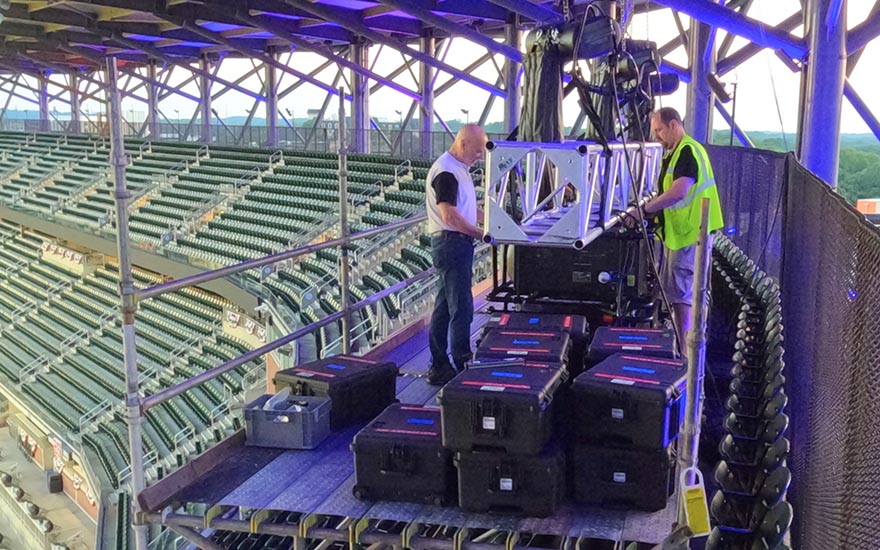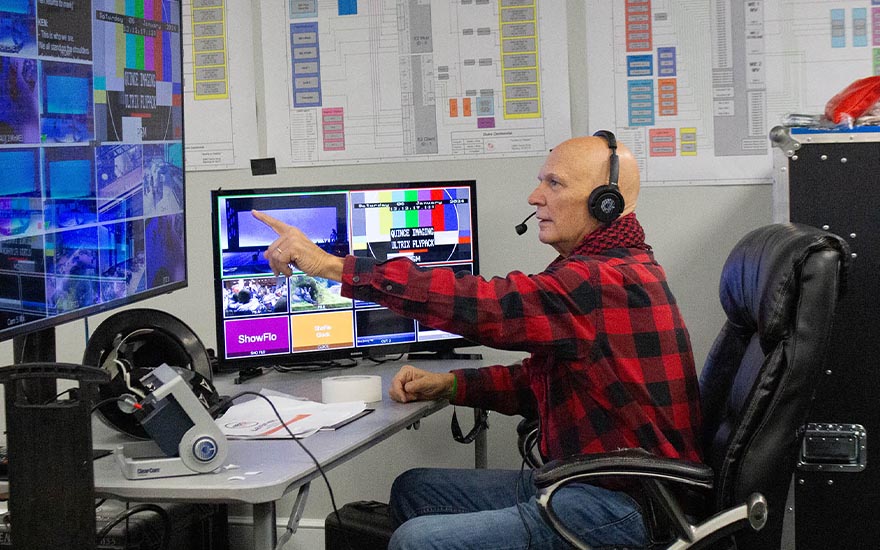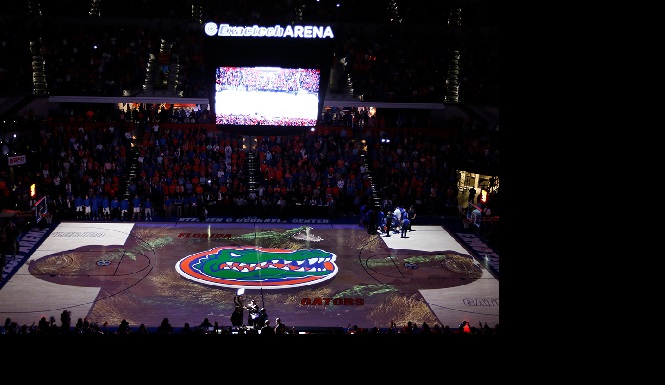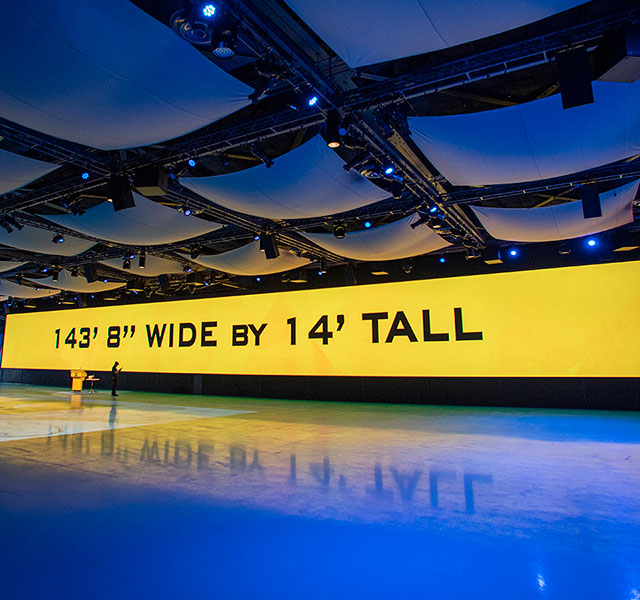We talk to Quince Imaging about their history and expanding what’s possible with projection
“Mind-blowing.” “Epic.” “Unforgettable.”
And those are just a small selection of complementary words used in the news media to describe Quince Imaging’s recent work. The company continuously pushes the boundaries of what’s possible with AV technology to spectacular effect. Whether it was the projection-mapped tribute to Hank Aaron during the MLB All-Star Game, stunning on-ice content for the Anaheim Ducks, or a tribute to Dolly Parton at her namesake theme park, fans, visitors, and media have taken note.
We had a chance to speak with Scott Williams, CEO of Quince Imaging, about their history, recent projects, and where the market – and Quince Imaging – is headed.
Q: Tell us a little about yourself!
Scott Williams (SW): My name's Scott Williams, and my current position at Quince Imagining is CEO taking over for my longtime partner Ron Curriers. My role here is to oversee the day-to-day operations, everything from helping to attract new business, servicing our current clients, making sure that our staff members are taken care of, and making sure that we have a safe, nurturing environment for all our team.

Scott Williams, left, rigging Christie Griffyn Series projectors for the MLB All-Star Game 2025.
Q: Could you talk a little about Quince's beginnings and what brought Scott and Ron together? How has Quince evolved over the past 28 years?
SW: Thirty years ago, Ron was working for one of my largest customers. At the time, I was the leading distributor of Eidophor video projectors in North America. Ron and I began talking about joining forces, believing we could grow stronger together. What united us was a shared mindset: focus on doing one thing exceptionally well, take care of our clients, our team, and our equipment. We knew that by holding true to those values, revenue and growth would follow.
From day one, that’s been our guiding principle. We don’t lead with ROI—it’s always been about ROE, a return on employees. Keeping our team happy leads to satisfied clients and seamless events, installations, and experiences. By staying committed to our expertise and becoming the best in our field, we’ve built Quince Imaging into what I believe is one of the best in the world.
Q: To many people, Quince Imaging is synonymous with the fan experience in college and professional sports. How has your work in this market grown and evolved?
SW: The growth in this market has been explosive. Not only do we continue to make projection technology more accessible and proliferated across various sports leagues, but we also continue to push the envelope on brightness, usability, and most importantly, continue to promote the fan-facing features.

Scott Williams, and the Quince Imaging team, focus on continually improving to be the best in their field. Here, Scott calls a show at Duke University.
Q: Have expectations from teams and/or fans changed?
SW: Unequivocally. Ten years ago, the playing surface was the largest surface in the arena. Fast forward to today, with the advent of larger scoreboards and halo LED displays, and the game has changed massively. For our part, we’ve worked alongside these changes to not just make the projection mapping technology stand out but also make it unique in the storytelling of the game.
Converting a court or rink into a video surface has so much embedded meaning compared to a traditional LED display. Team and fans are passionate and, in some cases, superstitious about their fields, courts, and rinks, and we can play into them with the storytelling elements in the mapping.
Q: You recently wrote that your work on the Hank Aaron Tribute at the MLB All-Star game pushed the boundaries of sports projection mapping. Could you elaborate on that statement?
SW: Eight years ago, we were the first to push the boundaries of projection mapping to become the first to project on an MLB infield. This summer, we were able to beat our own record not just by doubling brightness, but by also being the first to project onto an MLB outfield. While the technology was critical, as we mentioned, tying this into the history and story of Hank Aaron is what made the difference to fans.
Q: Are there any technical innovations or capabilities that are particularly exciting to you right now, especially as they pertain to live events or sports?
SW: There are really two. Number one, as we’ve always said, is brightness being the difference maker in helping these projects pop. Secondly, we’ve been heavily advancing our software and content packages to give game presentation more control over content, story, and real-time stats of the games.
Q: Quince has been at the heart of many notable projects – are there any that you’re particularly proud of? Why?
SW: The projects that really stick with me are the ones that pushed boundaries and proved to me I was in the right business. Early on, it was the broadcast award shows like the American Music Awards. I was still a young man, brought in to help directors look good on live television. The pressure was immense, with tens of millions of people watching worldwide, and you had to get it right in the moment. Technical challenges came up, but powering through them on a three-hour live broadcast was electrifying. That experience hooked me for life.
Another milestone was the 1996 Olympics in Atlanta. Two years earlier, we were at the LA Coliseum testing if projection could even work on a scale that large. I remember being asked over the radio, “Can you put a picture on the field?” and the thrill of proving it possible. That project shattered what people thought could be done with projection imaging and really set the stage for where the industry was headed.
The third moment that defines who we are was the start of our sports business with the Cavaliers’ retirement ceremony. They were visionary enough to let us projection-map the court, and it was one of the first times we truly went viral—picked up by the Today Show, Good Morning America, and news outlets everywhere. That moment showed us the power of our work to reach beyond the venue and into the culture at large.
Those three experiences—live broadcast, the Olympics, and the Cavaliers—were turning points. They didn’t just build my confidence; they helped shape the DNA of Quince Imaging.

One of Quince Imaging’s guiding principles is to lead with ROE – return on employees.
Q: Generally speaking, what’s ahead for Quince? Where can we see your work next?
SW: Thirty years ago, Ron and I stood around a pool table talking about a vision—what we wanted to build and how we would do it. In 2025, that vision continues to guide what’s ahead for Quince. Over three decades, we’ve stayed true to being subject-matter experts in imaging, and that naturally led us into related technologies: media servers to power projection, 12G broadcast camera systems, and direct-view LED displays. Clients now look to us not just for one solution, but for the right mix of technologies to deliver the best possible experience.
Looking ahead, we see tremendous growth in projection mapping and architectural projection. Cities, landmarks, and cultural icons are becoming canvases for brands and experiences to make a lasting impact—whether it’s the UN building, the Empire State Building, a bridge, or even natural landscapes. With today’s powerful projectors, advanced media servers, and the expertise of our team, ideas once thought impossible are now reality. A great example was the Major League Baseball All-Star Game in Atlanta, where we turned unexpected surfaces into storytelling platforms.
While MLB continues to evolve, our focus is also on advancing the technology behind NHL rink mapping. As adoption grows across the league, we’re partnering with teams to push those capabilities further—and we can’t wait to unveil what’s coming this season.
That’s what’s ahead for Quince: continuing to expand what’s possible in imaging while staying true to the vision that started it all.



